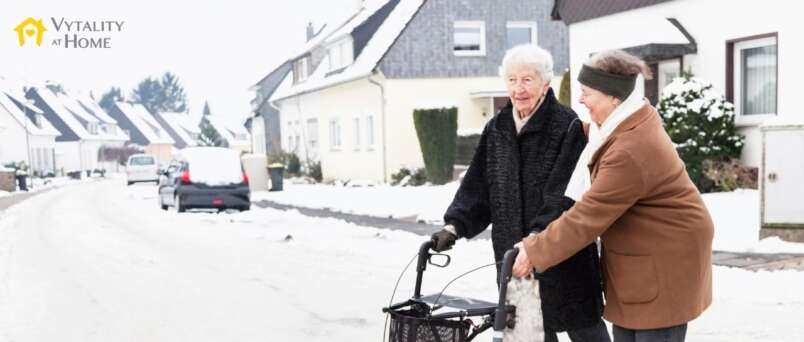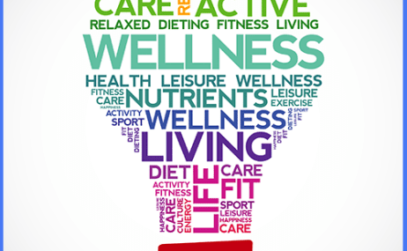Frostbite and hypothermia: seniors and extreme cold
We all know how cold it can get here in Calgary, and this year weather experts are predicting more snow and lower temperatures than usual due to the La Nina effect. Described as a “weather whiplash”, precipitation could eclipse last December’s record late snowfall.
Whilst skiers and snowboarders will relish to opportunity of an extended ski season the Rockies with lots of fresh powder to enjoy, heavy snow bring its own problems to others, especially for seniors.
Cold, wind and extreme cold
At any age, cold temperatures affect your body core temperature, which is normally 37 degrees C (99F). If that core temperature drops by just 1 or 2 degrees C, your risk of suffering harmful effects is increased.
To protect itself, your body constricts blood vessels close to the surface of your skin to reduce heat loss when temperatures dip below freezing. (0 degrees C / 32 degrees F). If you are out in the cold for long periods, blood flow can become restricted to your hands, feet, nose and ears.
If you already have poor blood circulation due to conditions such as diabetes or a heart condition, this can especially dangerous if you are exposed to freezing temperatures for a period of time.
Cold temperatures and windchill
Cold weather combined with low windchill temperatures can increase your risk of windburn, frostnip and frostbite. Wind chills cause your body to lose heat more quickly. Once wind chill values dip below -27C, frostbite is a genuine risk on any exposed skin.
Windburn
Windburn happens when cold winds strip the top layer of oil from your skin, resulting in excessive dryness and reddening, which can be both sore and itchy.
Windburn can be treated with a protective skin care product, but do not rub or scratch the affected areas.
Frostnip and frostbite
Frostnip is an early stage of frostbite affecting area of skin exposed to cold. The skin can look yellow or white but remains soft to the touch. Frostnip is reversible if you move to a warm location immediately. Wrap yourself in a blanket and gentle rewarm over 15 minutes or more, when the skin should return to its normal colouration.
Intermediate stage frostbite (sometimes known as superficial frostbite) comes from prolonged exposure to cold. Your skin will feel cold and hard to the touch. This level of frostbite affects the top layer of skin and tissue, which will blister and turn red on gentle rewarming. Move to a warm location, remove any wet clothing and gently immerse the affected area in warm water just above body temperature until medical assistance arrives. Even gentle rewarming can be painful as your skin defrosts.
Severe frostbite must be treated immediately to avoid long-term damage to skin, tissues and muscles. Due to nerve damage, affected skin can blister and turn black, whilst affected tissue may need removing to avoid infection. Frostbite treatment involves moving immediately to a warm indoor location, and calling for medical assistance. Whilst waiting for help to arrive, remove wet clothing and if advised to do so, practicegentle rewarming by immersing the affected area in body temperature water.
Never try and warm the part of the body with frostbite in front of direct heat such as a fire as this can cause further damage.
Hypothermia
Hypothermia is when the body temperature falls below its normal level.
Stage 1 hypothermia involves a drop in body temperature of 1 or 2 degrees C. If you have stage 1 hypothermia, you may feel tired, cold, shiver and feel sick. To relieve the symptoms:
- move to a warm location
- keep your muscles moving
- wrap yourself in a blanket
- remove any wet clothing
- drink a hot sweet drink (but avoid caffeine or alcohol)
Stage 2 hypothermia is when the body temperature drops between 2 and 4degrees C. You will have strong shivers, and your muscles won’t respond properly. Your lips, ears, fingers and toes may turn blue. Move immediately to somewhere warm and call for medical assistance.
Stage 3 hypothermia is when your body temperature drops below 32degrees C. You may not shiver but you’ll have difficulty speaking or moving. You must seek medical help immediately – dial 911 or your local emergency number.
Preventing windchill, frostbite and hypothermia
If it’s very cold outside, and you don’t need to go outside your home, stay in the warm. Keep your home at a constant temperature and shut internal doors so you don’t sit in a cold draft.
If you need to go outside wear appropriate clothing, even if you’re just checking your mailbox or putting out the trash. Layer up with wool and thermal fabrics so you keep your body heat in. Wear a wind resistant hat gloves and outer layer to counter any wind chill. Cover your face to avoid windburn too.
Don’t forget your feet – wear waterproof warm winter boots with clean, dry thermal socks. Frostbite can affect extremities such as fingers and toes even when you’re wearing shoes and gloves. Stay dry, as you’ll cool down much more quickly if your clothing or boots are wet.
Make sure you keep your body fuelled to fight the cold by eating a healthy diet. Pack a pocketful of high energy snacks if you are going out in the cold even for a short period of time.
Take a fully charged cell phone with you and put it inside your jacket to keep it warm. Cell phone batteries are affected by cold temperature below -4 degrees C, (32 degrees F) which might mean they appear to go flat. When the battery is warm again, the phone often comes back into life. Keeping it inside clothing close to your body keeps it warmer and more reliable.
Snow clearance and outside chores
As we grow older, outside winter tasks such as snow clearance carry more risk, not just from frostbite and hypothermia but from slips and falls on icy surfaces. That’s why at Vytality we work with professional Partners to provide key services o our clients at special rates. Our snow clearing Partners will come and ensure your section of sidewalk, driveway and outside steps is snow-free, so you can stay safe inside and watch them work instead of risking your own health. Just call us to book snow clearance and other optional services.
Our home caregivers can check on your loved one in their home and offer companionship and company even if they don’t require personal care. Regular home care offers seniors who may become effectively housebound during cold weather enjoyable activities to share. It adds purpose and structure to their days, reducing isolation and feelings of loneliness when they can’t get out and about.
To book Calgary home care or any of our Partner services,




